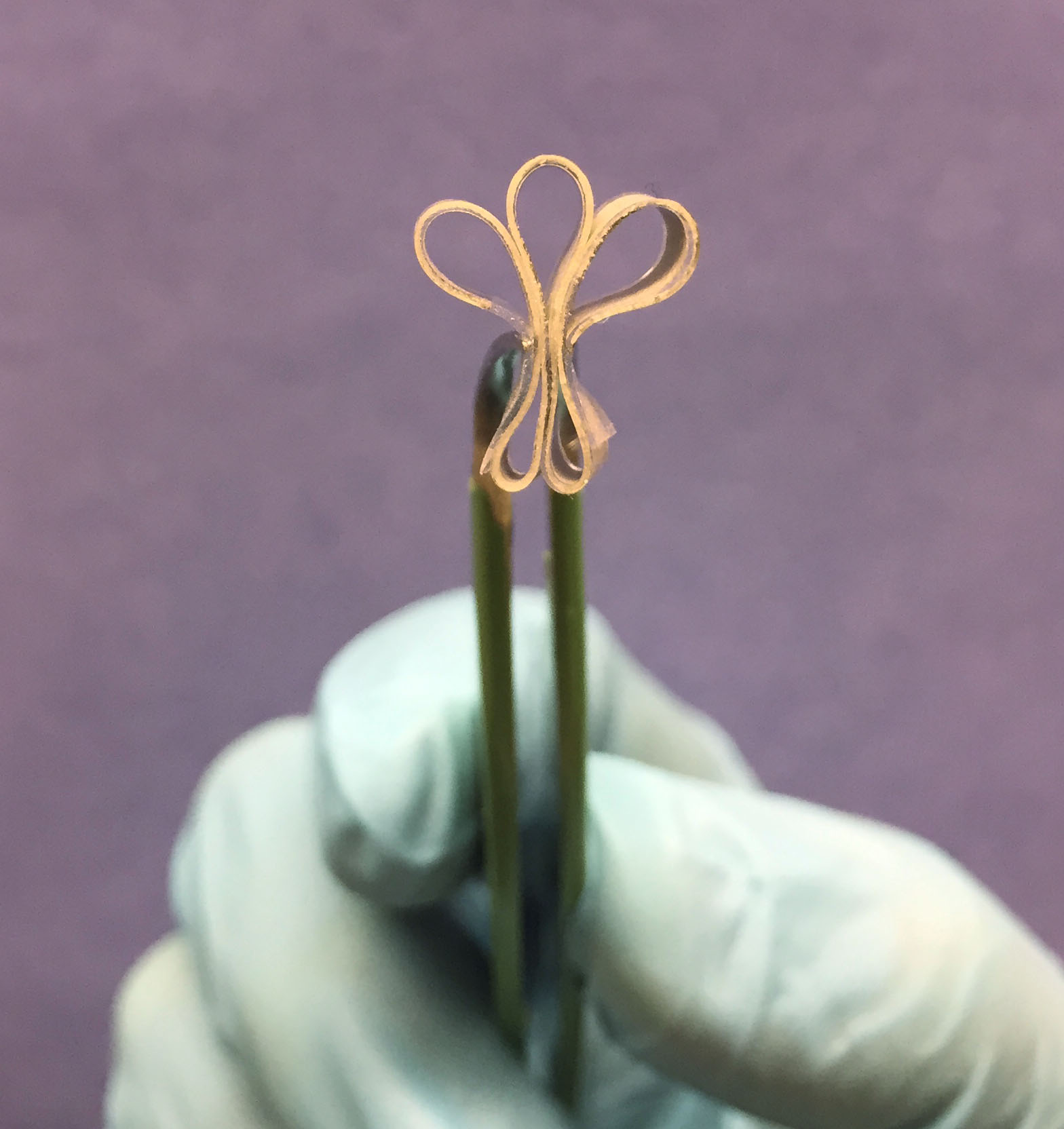Researcher Spotlight: Shanshan Yao, Ph. D.
Shanshan Yao joined the Mechanical Engineering Faculty at Stony Brook University in the Spring of 2020. Her research is primarily in the areas of functional materials, smart structures, advanced manufacturing, and soft electronics. Professor Yao's research aims to provide new solutions and/or explore new applications in personal healthcare, fitness tracking, rehabilitation, soft robotics, and entertainment through combined innovations in materials engineering, mechanical design, and multi-scale manufacturing and integration. Examples of her research interests include synthesis and characterization of nano/micro materials and structures; manufacturing and integration techniques for smart devices; soft actuators and soft robotics; flexible and stretchable electronics for healthcare, motion tracking, and human-machine interaction. Professor Yao serves as a reviewer for many journals including Advanced Materials, Advanced Functional Materials, Materials Horizons, Journal of Materials Chemistry A, ACS Applied Materials & Interfaces, and Nanoscale.
What interested you in joining the Department of Mechanical Engineering at Stony Brook University?
I have several friends who graduated from Stony Brook University, so I heard a lot about SBU. When I applied for graduate school several years ago, I applied to the Ph.D. program here. I interviewed with two faculty in CEAS in my home country and got admitted to the Ph.D. program. I did not come to Stony Brook University at that time because I was more interested in the research topic at my Ph.D. advisor’s university. Several years later, when I finished the Postdoctoral training, I applied for the faculty position here and I joined Stony Brook University in January 2020. The campus was very familiar to me from the moment I first saw this campus.
What do you like most about working at Stony Brook?
I like most the inclusive and diverse environment at Stony Brook University, and in the Department of Mechanical Engineering. It has been very challenging for me as a new faculty during COVID-19, the faculty and staff in the ME department and CEAS have been very welcoming and helpful.
In what area is your research focused?
The focus of my current research lies in the development and applications of smart materials and structures for soft electronics, such as wearable sensors and soft actuators. There has been a fast-growing market for wearable devices. I am excited to integrate multimodal sensing with advanced signal processing methods, machine learning algorithms, for example, to develop new methods for health monitoring, activity tracking, and human-machine interactions. In addition, soft robotics that can mimic biological systems with lifelike motions have gained tremendous interest. I am interested in designing smart soft robotics based on deformable functional materials and smart structures. My group is also working on emerging manufacturing and integration techniques for the scalable and reliable manufacturing of soft electronics.
What interested you in your type of research?
I have diverse academic training in electrical engineering, electronic materials, and mechanical engineering. This combination of academic backgrounds is ideal for developing soft electronics, where innovations in materials, electronic components, and designs of deformable structures are desired. Soft electronics is also a quickly emerging and promising field that may change the way of health monitoring and human-machine interactions. I am lucky and excited to work in this field.
What are some practical applications for your area of research?
My research on smart materials, structures, and soft electronics can have broad applications. For example, skin-attachable sensors are ideal for long-term unobtrusive health monitoring and motion tracking. Soft actuators are important building blocks for soft robotics and haptic devices. Combining wearable sensors and haptic feedback, we can also expect a more natural and bi-directional interaction between humans and smart machines (robots, computers, etc).
What courses are you teaching right now? What is your favorite part about teaching?
I am teaching Mechatronics for both undergraduate and graduate levels. In
this course, each component of a mechanical system is introduced, including sensors, actuators, analog/digital signal processing, analog-digital conversions, and control architecture. I am currently developing a new course, smart materials and structures, to introduce commonly used functional materials and structures for sensors, actuators, and energy devices.
What career advice would you give to students who are interested in becoming a Mechanical Engineer?
I would encourage students to have more hands-on experience and apply what they have learned to solve real-world problems. There are many ways to gain such experience, including class projects, research projects in a lab, and internships. The other advice is to have a career plan early and gain the required skill set accordingly.
What is one of your proudest professional moments?
The moment when I heard about the success stories from students. Both in teaching and research, I would like to share my experience and help students grow. The most rewarding thing is to see the progress of students.
What do you enjoy doing the most in your free time?
I like traveling, baking, and aerobics in my free time. Influenced by my grandfather, I used to practice Chinese calligraphy. The most exciting thing in my childhood was to handwrite inscriptions of the new year and share with families and friends.

